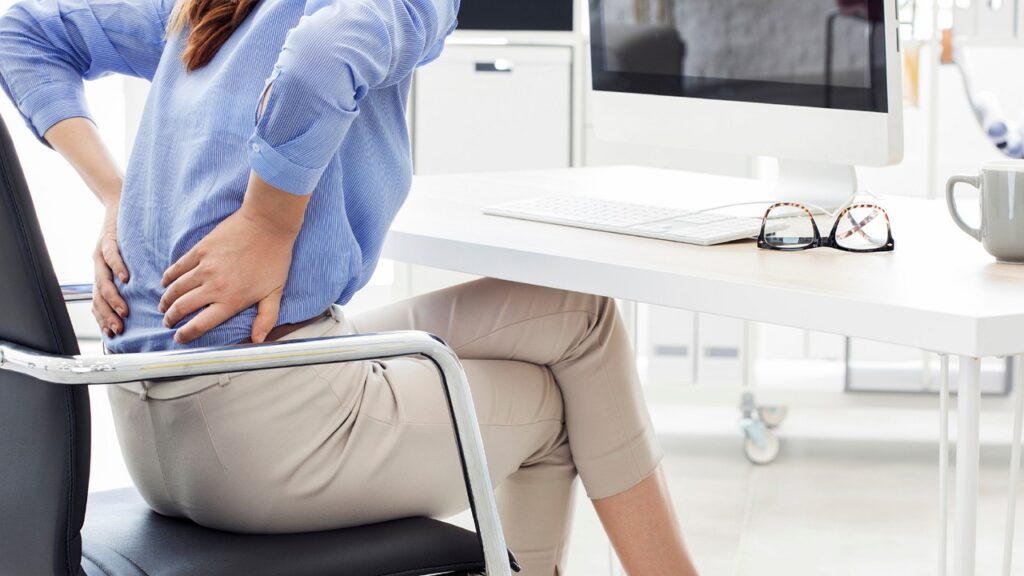The Science...
Our programs are based on the most up to date science and guidelines available. With input from industry experts, we built our website on the pillars of education, activity modification, exercise, and individualization.

Education
Back pain can be debilitating and not knowing what is going on can be scary. Our tool was designed to screen for scientifically identified patterns in your symptoms. By identifying these patterns we can provide you with an explanation of why your back might be hurting, and better yet, provide you with a possible solution. Keep in mind this is NOT a diagnosis of any sort. See our medical disclaimer for more.
Activity Modification
Our program will help you identify the triggers of your back pain and provide you with practical ways to avoid them. If avoidance is not possible we will help you find new ways to accomplish these necessary tasks with less strain on your back. This type of treatment is called behavioral therapy and has been shown to be an effective management strategy for back pain.
Exercise
The best available evidence has consistently shown that exercise is the most promising way to manage back pain. In most instances, exercise is as effective, if not more effective than various hands-on therapies and even surgery! But don’t worry, we understand that moving can also be painful. Thankfully, exercise doesn’t have to be painful to work.
Individualization
What is right for one person, may not be right for another. Researchers have found that plans developed with consideration of the patient’s life, goals, symptoms, and preferences are more effective. This has long been the big issue with online back pain solutions. We developed our tool to make sure your program is made for you.
The pillars of our website were developed within the context of the Biopsychosocial model of health care.
This model of health care states that biological, psychological, and social factors all play a critical part in your overall health. This means that while the physical state of your back is important to consider, it cannot be taken out of the context of your unique life.
At ThePainFreeBack.com we truly believe that our program provides you with the best and most convenient back pain information available.
So if you’re ready for a change, there is no better place to start than here.
Want to know more?
Click the “Show More” button below to see a list of some key research papers we referenced while developing our website so you can learn from the source:
Lee, Y. S., Kang, K. H., & Yoo, W. J. (2017). The effect of exercise therapy on chronic low back pain: A systematic review and meta-analysis. Cochrane Database of Systematic Reviews, 2, CD009790. doi:10.1002/14651858.CD009790.pub2
Godges, J. J., Anger, M. A., Zimmerman, G., & Delitto, A. (2008). Effects of Education on Return-to-Work Status for People With Fear-Avoidance Beliefs and Acute Low Back Pain. Physical Therapy, 88(2), 231-239. https://doi.org/10.2522/ptj.20050121
Assendelft, W. J., Morton, S. C., Yu, E. I., Suttorp, M. J., & Shekelle, P. G. (2003). Spinal manipulative therapy for low back pain: a meta-analysis of effectiveness relative to other therapies. Annals of internal medicine, 138(11), 871-881.
Slade, S. C., Patel, S., Underwood, M., & Keating, J. L. (2014). What are patient beliefs and perceptions about exercise for nonspecific chronic low back pain? A systematic review of qualitative studies. Clinical Journal of Pain, 30(11), 995-1005. doi: 10.1097/AJP.0000000000000044
Henschke, N., Ostelo, R. W. J. G., van Tulder, M. W., Vlaeyen, J. W. S., Morley, S., Assendelft, W. J. J., & Main, C. J. (2010). Behavioural treatment for chronic low-back pain. Cochrane Database of Systematic Reviews. https://doi.org/10.1002/14651858.cd002014.pub3
Brox, J. I., Nygaard, Ø. P., Holm, I., et al. (2010). Four-year follow-up of surgical versus non-surgical therapy for chronic low back pain. Annals of the Rheumatic Diseases, 69, 1643-1648.
Costa, L. D. C. M., Maher, C. G., Hancock, M. J., McAuley, J. H., Herbert, R. D., & Costa, L. O. P. (2012). The prognosis of acute and persistent low-back pain: a meta-analysis. CMAJ, 184(11), E613-E624. doi: 10.1503/cmaj.111271
Souza, T. A., Maher, C. G., Hancock, M. J., & Latimer, J. (1999). Intertester reliability of a low back pain screening tool. Spine, 24(2), 110-115. doi:10.1097/00007632-199901010-00014
Allegri, M., Montella, S., Salici, F., Valente, A., Marchesini, M., Compagnone, C., Baciarello, M., Manferdini, M. E., & Fanelli, G. (2016). Mechanisms of low back pain: a guide for diagnosis and therapy. F1000Research, 5, F1000 Faculty Rev-1530. https://doi.org/10.12688/f1000research.8105.2
Aaen, J., Austevoll, I.M., Hellum, C. et al. Clinical and MRI findings in lumbar spinal stenosis: baseline data from the NORDSTEN study. Eur Spine J 31, 1391–1398 (2022). https://doi.org/10.1007/s00586-021-07051-4
Dankaerts, Wim PhD*†; O’Sullivan, Peter PhD*; Burnett, Angus PhD*; Straker, Leon PhD*. Differences in Sitting Postures are Associated With Nonspecific Chronic Low Back Pain Disorders When Patients Are Subclassified. Spine 31(6):p 698-704, March 15, 2006. | DOI: 10.1097/01.brs.0000202532.76925.d2
Chien JJ, Bajwa ZH. What is mechanical back pain and how best to treat it? Curr Pain Headache Rep. 2008 Dec;12(6):406-11. doi: 10.1007/s11916-008-0069-3. PMID: 18973732.

